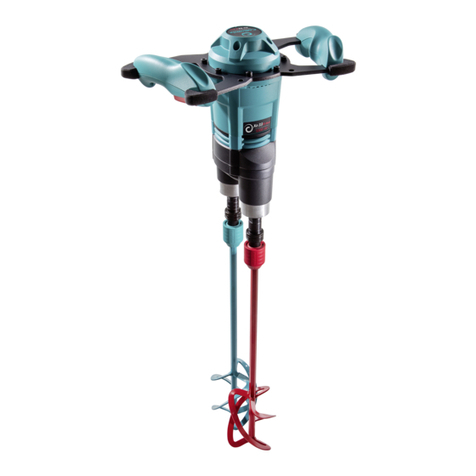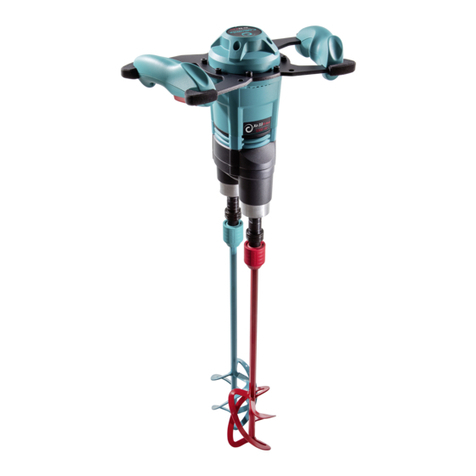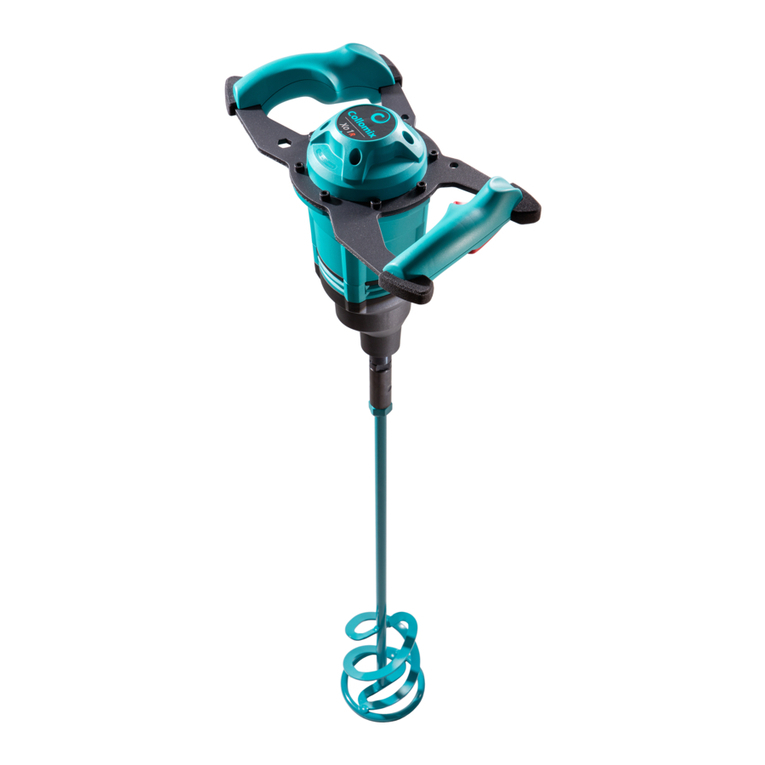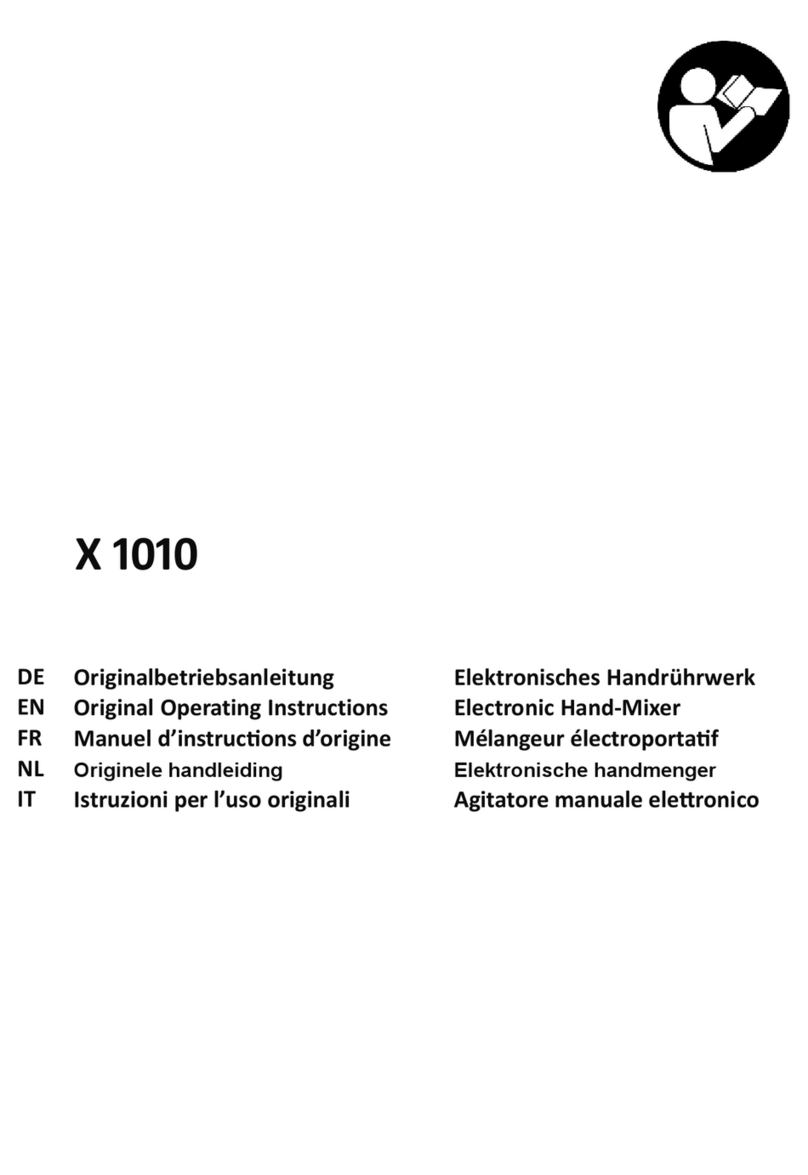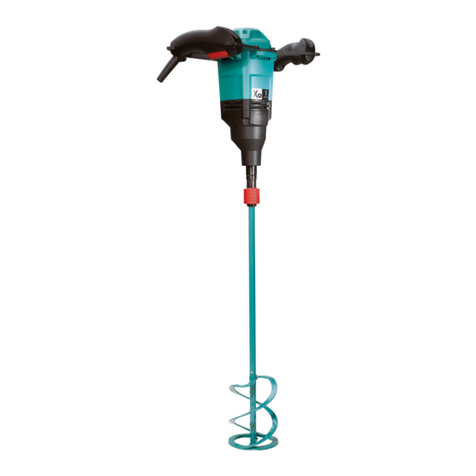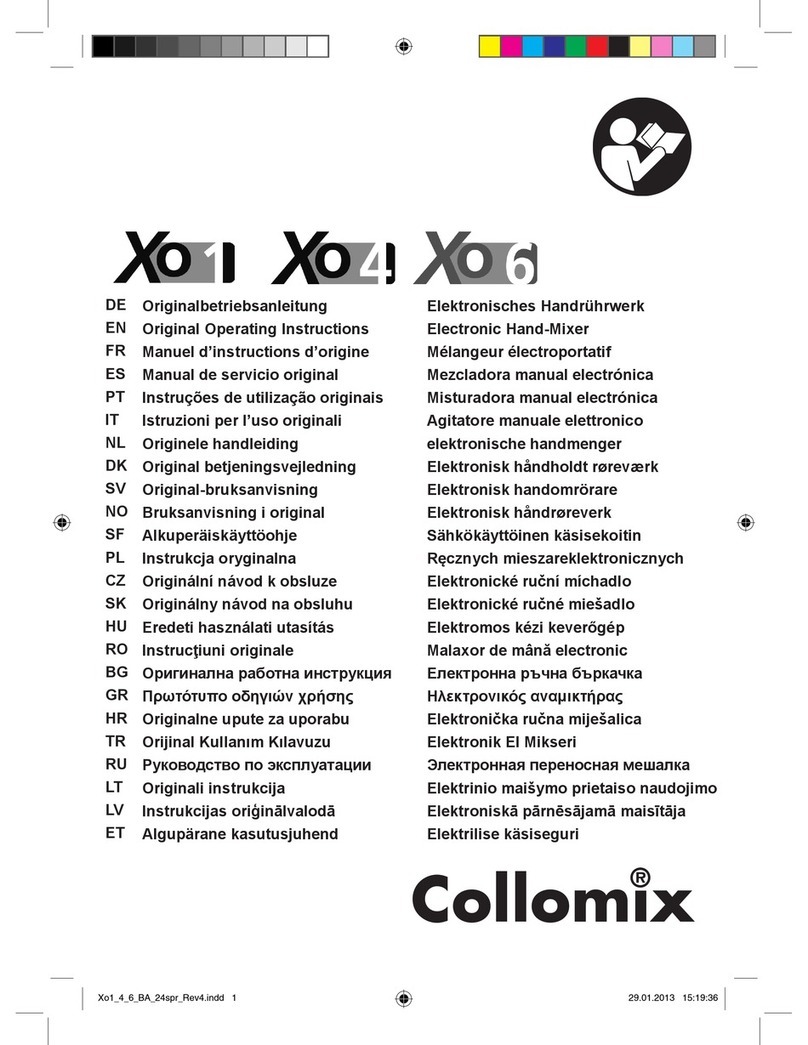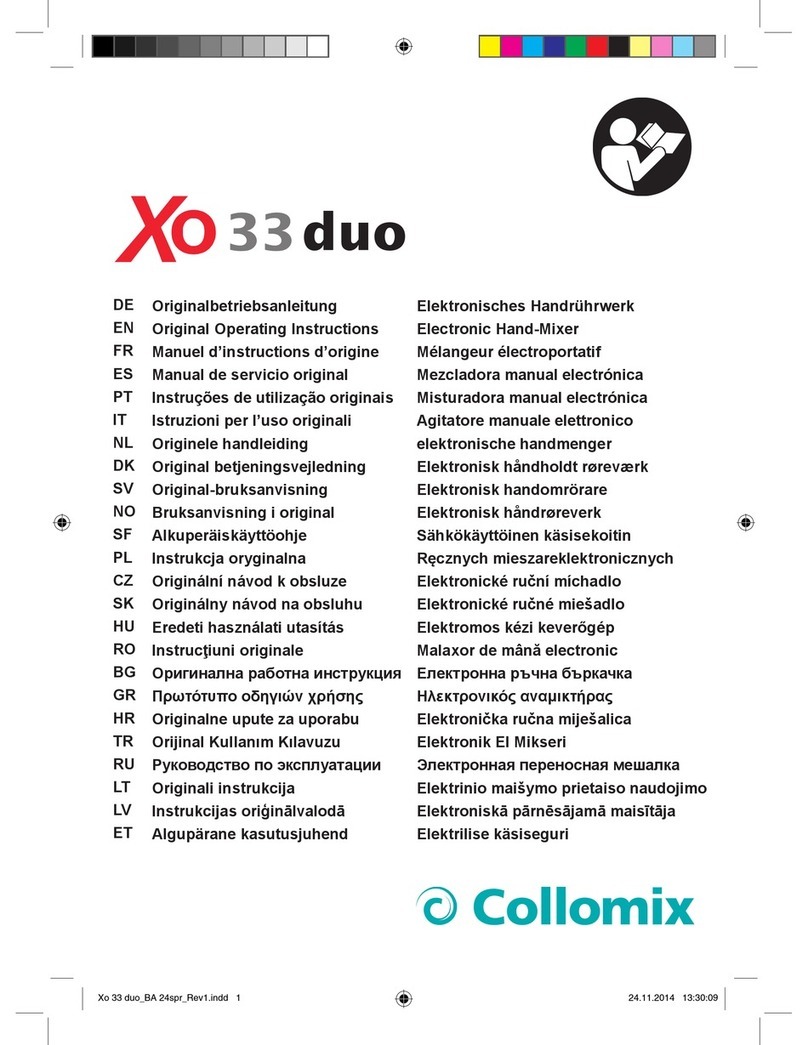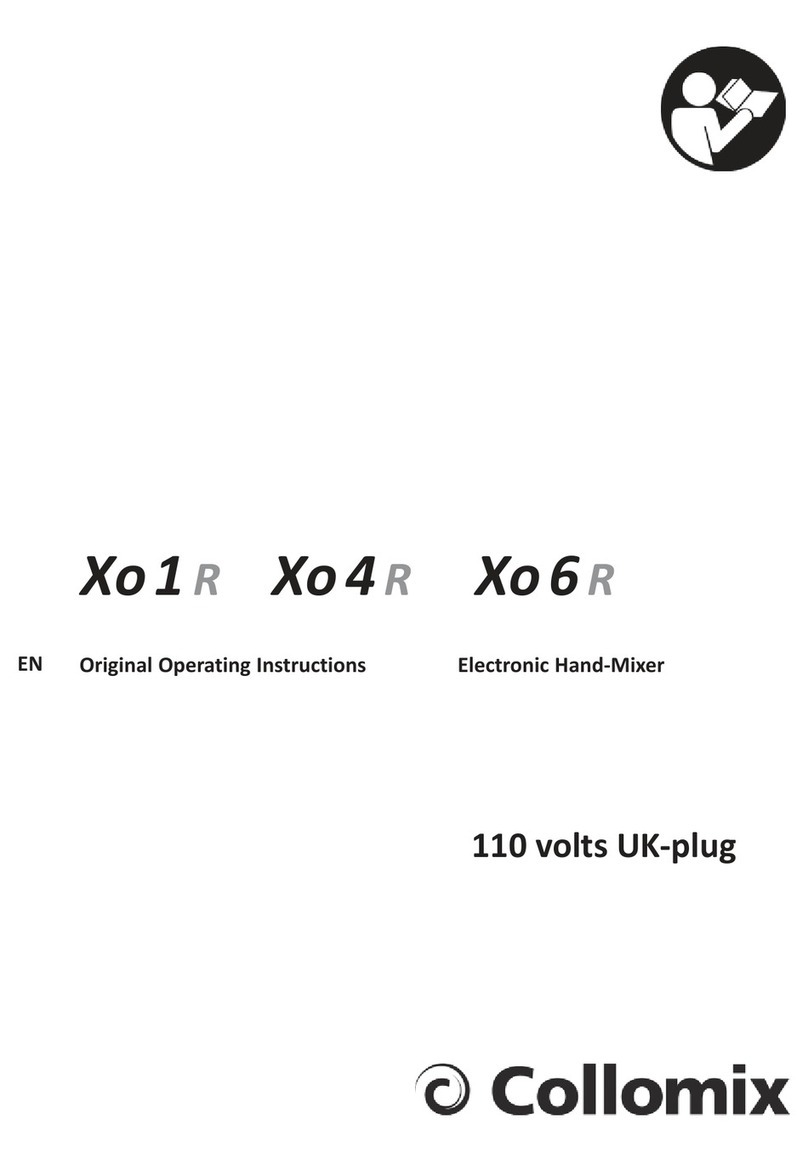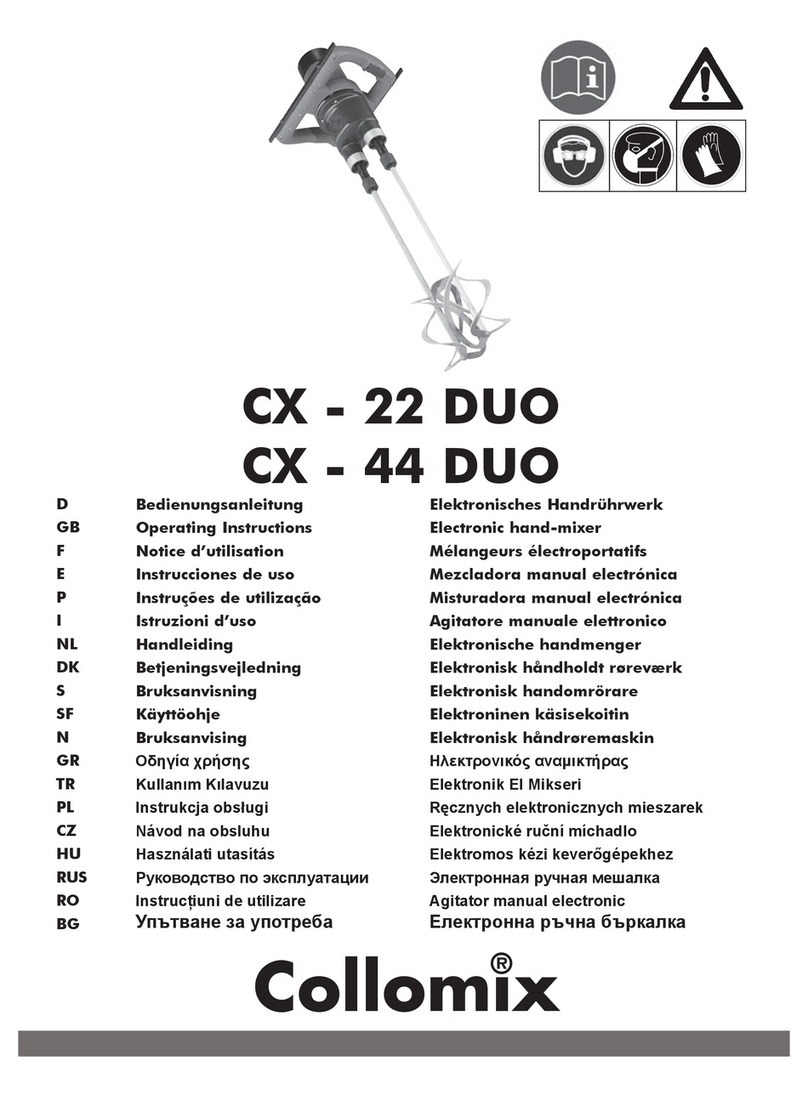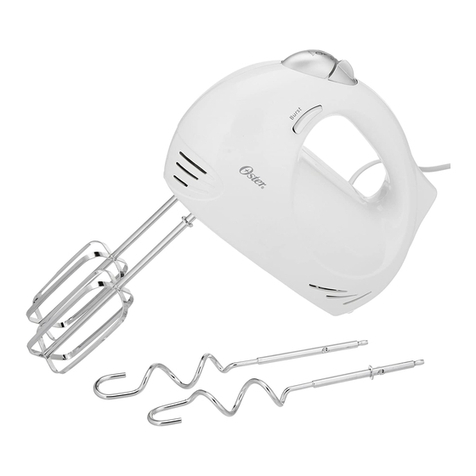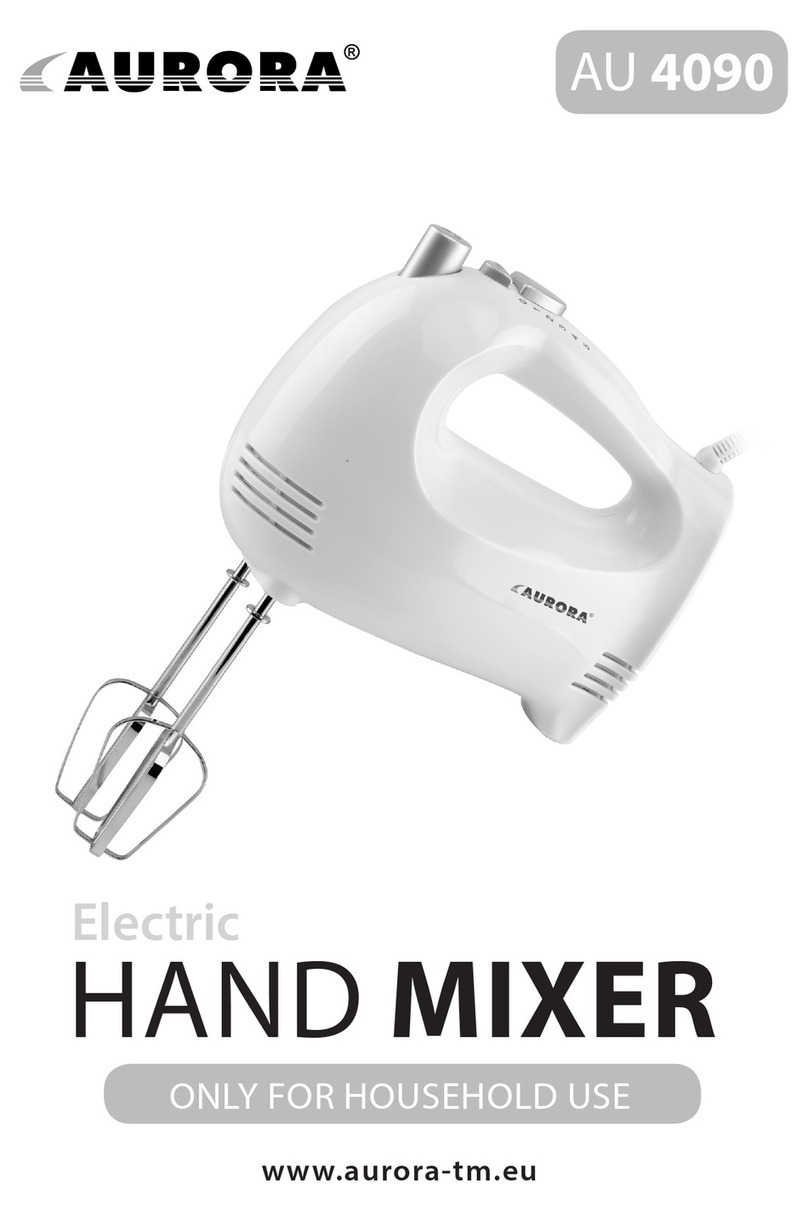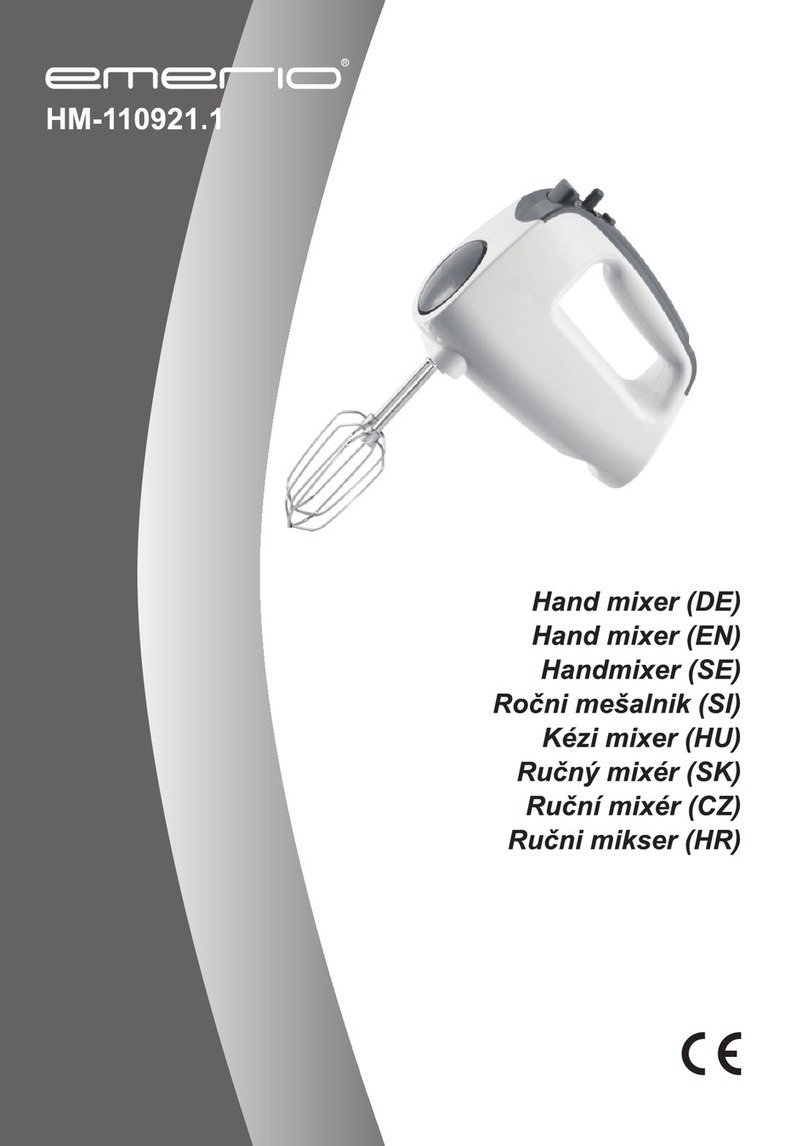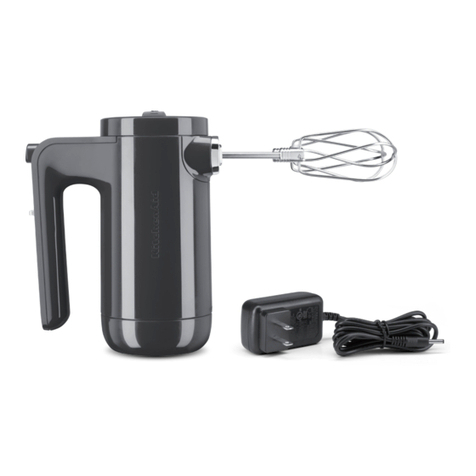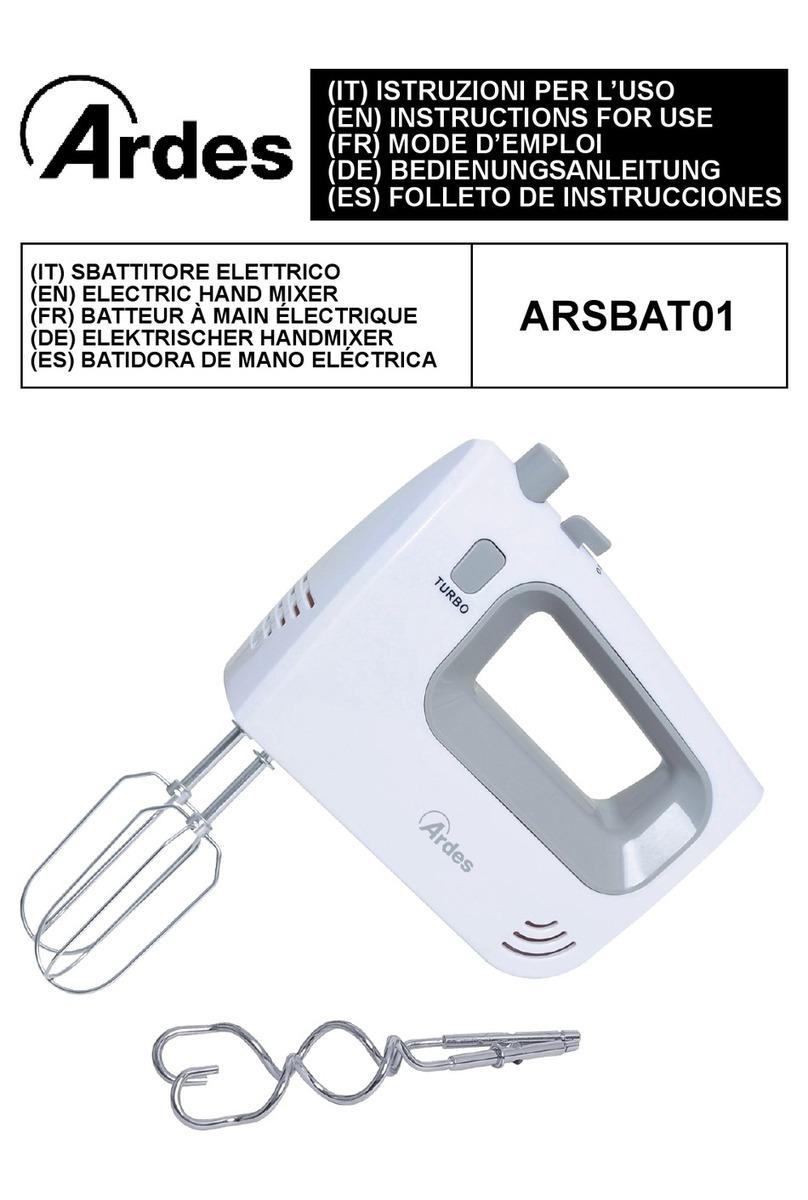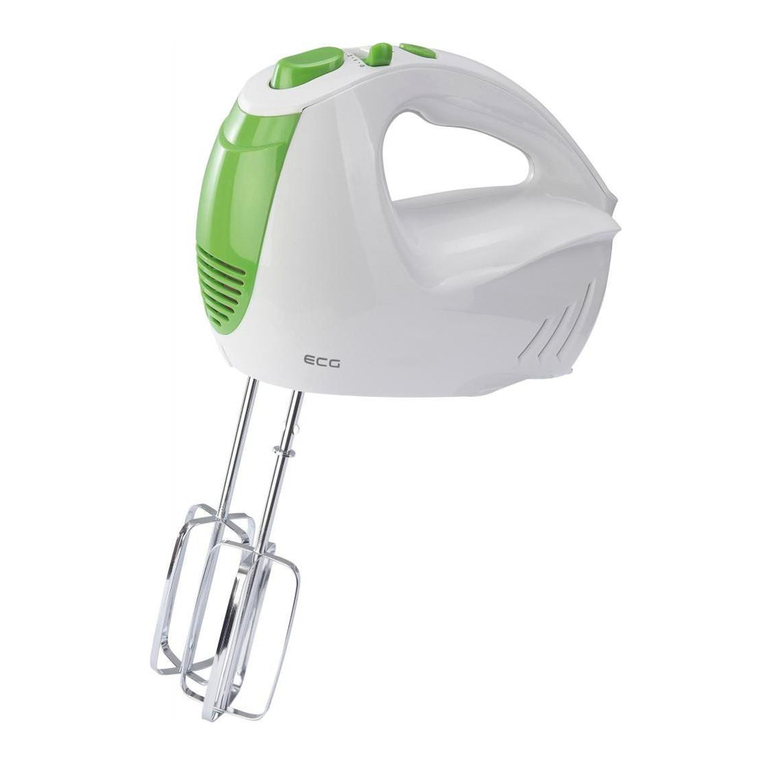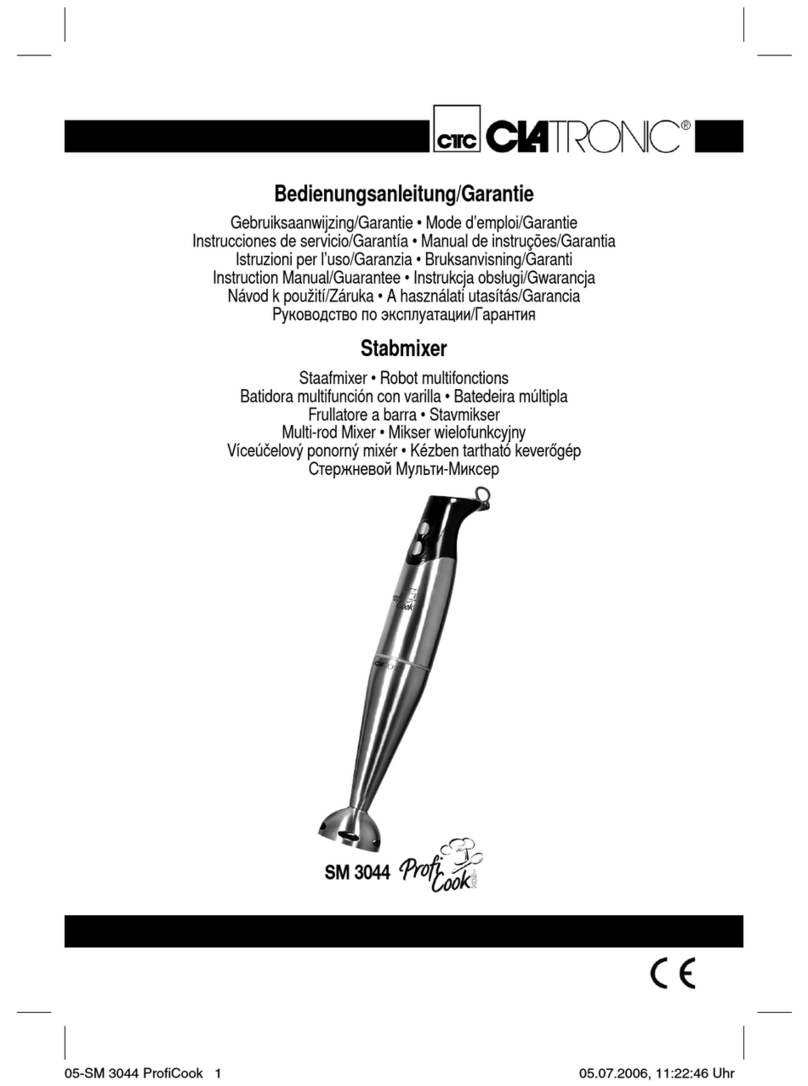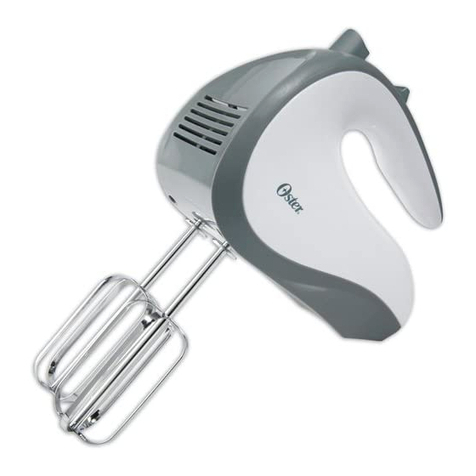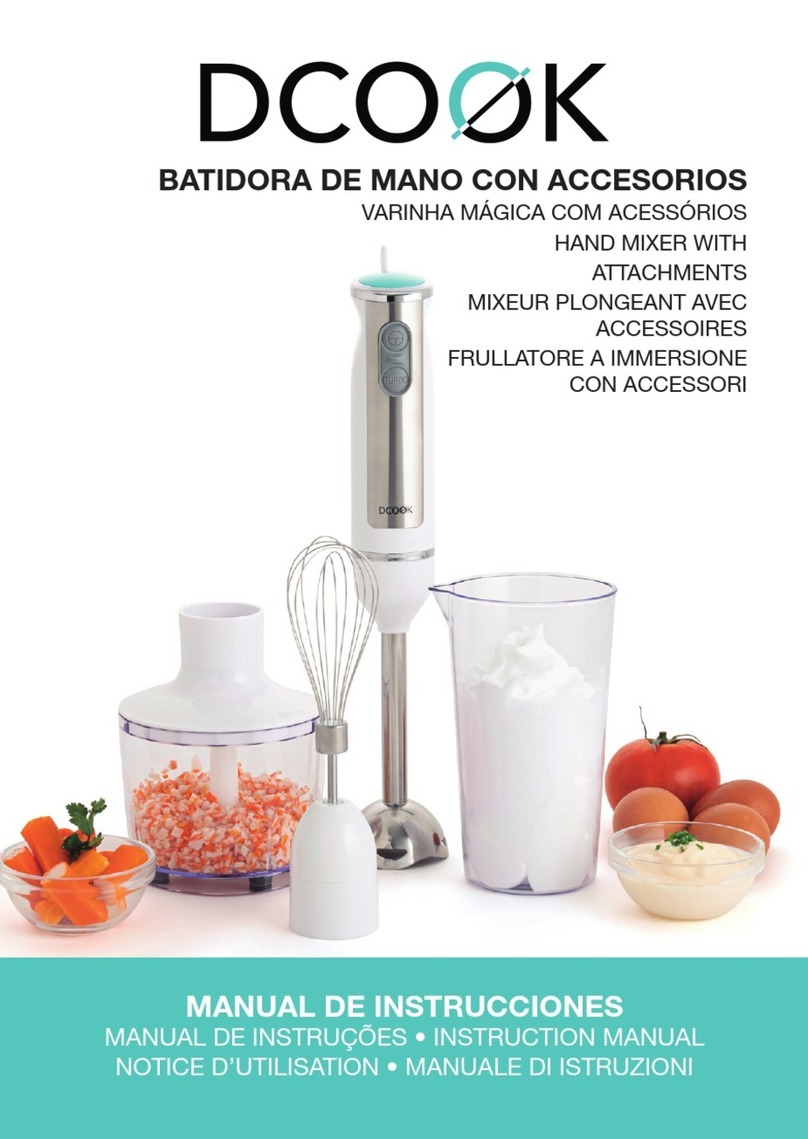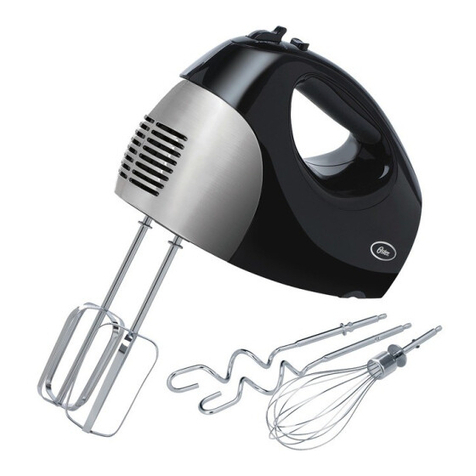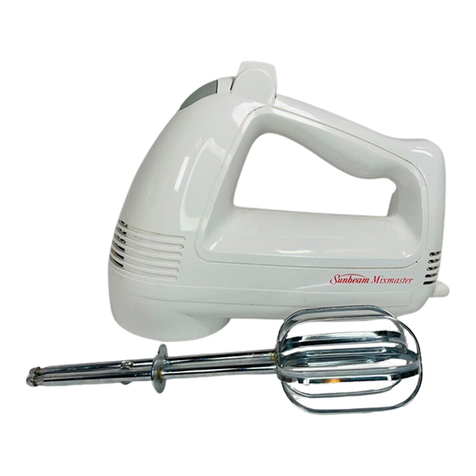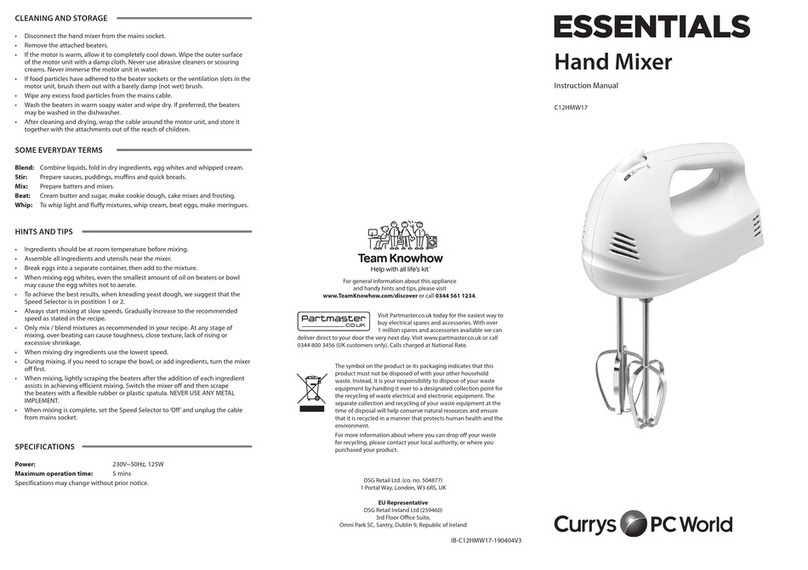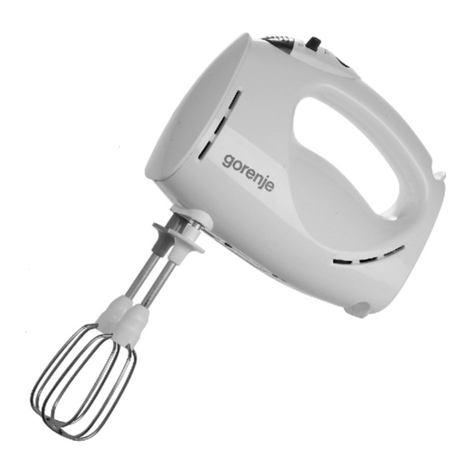
Données techniques
Régles de Sécurité Genérales
Puissance nominale:
Tension:
Vitesses:
Regime en charge:
Turbine recommandée Ø:
Niveau de pression accoustique:
Niveau de puissance accoustique:
Class de protection :
CX 100 HF CX 300 HF CX 600
800 W/ 7,0 Amp. 800 W/ 7,0 Amp. 1200 W/ 10,4Amp.
120 AC/ 60 Hz 120 AC/ 60 Hz 120 AC/ 60 Hz
1 2 2
0 - 790 min-1 0 - 470 min-10 - 490 min-1
0 - 890 min-1 0 - 620 min-1
Ø 120 mm /4 3/4” Ø 120 mm / 4 3/4” Ø 140 mm / 5 1/2”
84 dB(A) 84 dB(A) 89 dB(A)
97 dB(A) 97 dB(A) 102 dB(A)
/II /II /II
Vous devez lire et comprendre toutes les instructions. Le non-respect, même partiel, des instructions ci-aprés
entraîne un risque de choc électrique, d’incendie et/ou de blessures graves.
CONSERVEZ CES INSTRUCTIONS
Aire de travail
1. Veillez à ce que l’aire de travail soit propre et bien éclairée. Le désordre et le manque de lumière favorisent les accidents.
2. N’utilisez pas d’outils électriques dans une atmosphère explosive, par exemple en présence de liquides, de gaz ou de poussières
inflammables. Les outils électriques créent des étincelles qui pourraient enflammer les poussières ou les vapeurs.
3. Tenez à distance les courieux, les enfants et les visiteurs pendant que vous travaillez avec un outil électrique. Ils pourraient vous distraire et
vous faire faire une fausse manoeuvre.
Sécurité électrique
4. Les outils à double isolation sont équipés d’une fiche polarisée (une des lames est plus large que l’autre), qui ne peut se brancher que
d’une seule façon dans une prise polarisée. Si la fiche n’entre pas parfaitement dans la prise, inversez sa position; si elle n’entre toujours
pas bien, demandez à un électricien qualifié d’installer une prise de courant polarisée. Ne modifiez pas la fiche de l’outil. La double isolation
èlimiene le besoin d’un cordon d’alimentation à trois fils avec mise à la terre ainsi que d’une prise de courant mise à la terre.
5. Évitez tout contact corporel avec des surfaces mises à la terre (tuyauterie, radiateurs, cuisinières, réfrigérateurs, etc.). Le risque de choc
électrique est plus grand si votre corps est en contact avec la terre.
6. N’exposez pas les outils électriques à la pluie ou à l’eau. La présence d’eau dans un outil électrique augmente le risque de choc électrique.
7. Ne maltraitez pas le cordon. Ne transportez pas l’outil par son cordon et ne débranchez pas la fiche en tirant sur le cordon. N’exposez pas
le cordon à la chaleur, à des huiles, à des arêtes vives ou à des pièces en mouvement. Remplacez immédiatement un cordon endommagé.
Un cordon endommagé augmente le risque de choc électrique.
8. Lorsque vous utilisez un outil électrique à l’extérieur, employez un prolongateur pour l’extérieur marqué: “W-A” ou “W”. Ces cordons sont
faits pour êtes utilisés à l’extérieur et réduisent le risque de choc électrique.
Sécurité des personnes
9. Restez alerte, concentrez-vous sur votre travail et faites preuve de jugement. N’utilisez pas un outil électrique si vous êtes fatigué ou sous
l’influence de drogues, d’alcool ou de médicaments. Un instant d’inattention suffit pour entraîner des blessures graves.
10. Habillez-vous convenablement. Ne portez ni vêtements flottants ni bijoux. Confinez les cheveux longs. N’approchez jamais les cheveux,
les vêtements ou les gants des pièces en mouvement. Des vêtements flottants, des bijoux ou des cheveux longs risquent d’être happés par des piéces en
mouvement. Gardez les poignées sèches, propres et exemptes d’huile et de graisse.
11. Méfiez-vous d’un démarrage accidentel. Avant de brancher l’outil, assurez-vous que son interrupteur est sur ARRÊT. Le fait de transporter
un outil avec le doigt sur la détente ou de bracher un outil dont l’interrupteur est en position MARCHE peut mener tout droit à un accident.
12. Enlevez les clés de réglage ou de serrage avant de démarrer l’outil. Une clé laissée dans une pièce tournante de l’outil peut provoquer des
blessures.
13. Ne vous penchez pas trop en avant. Maintenez un bon appui et restez en équilibre en tout temps. Un bonne stabilité vous permet de mieux
réagir à une situation inattendue.
14. Utilisez des accessoires de sécurité. Portez toujours des lunettes ou une visière. Selon les conditions, portez aussi un masque antipoussière, des
bottes de sécurité antidérapantes, un casque protecteur er/ou un appareil antibruit.
AVERTISSEMENT
